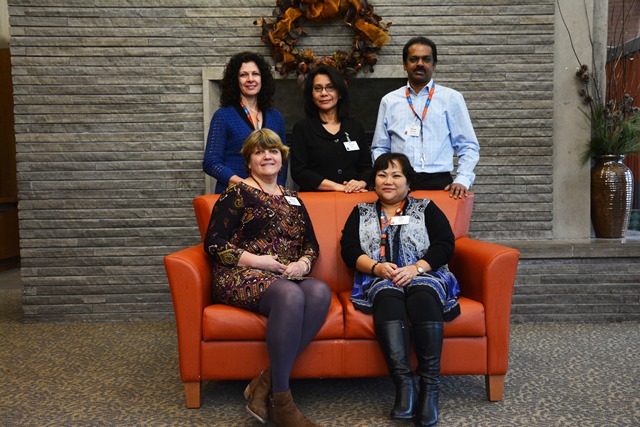
By Emily Dawson
Historically, when an outbreak was declared at Providence Healthcare’s long-term care home,
staff and volunteers would have to scramble to manually call the families or Substitute Decision Makers for all 288 residents who live in the close-knit, active community.
“When evaluating the efficacy of manual calls, we noted a few barriers to providing consistent, accurate and timely notifications,” said Aurora Wilson, Providence’s manager of Infection Prevention and Control (IPAC).
“The process was time-consuming and took clinicians away from care during critical moments in an outbreak situation. We also found the communications were inconsistent, as we would have clinical and non-clinical staff — and sometimes volunteers — making these calls. The call process definitely added to stress and frustration of staff amidst an outbreak.”
Now, an automated mass-calling system has been implemented for whenever there’s an outbreak at the Cardinal Ambrozic Houses of Providence long-term care home.
During an outbreak, Providence notifies families and Substitute Decision Makers for several reasons: to keep other residents and visitors safe by minimizing the spread of infection through awareness; to maintain organizational transparency; and to help everyone make informed decisions about visiting.
When an outbreak is declared, the system allows the IPAC staff to select the affected unit, and it then uploads the contacts to the automated dialer’s portal and initiates the communications. If a call is answered or goes to voicemail, families hear a standardized script with the outbreak details. The system is programmed to repeat the call when there is no answer.
“The automated calling system leaves the staff to care for the residents and implement outbreak measures. For families, the system offers a standardized message that’s clear and concise. The message also directs them to a hotline if they have additional questions,” said Wilson.
“There is room to grow and spread this system to Providence Hospital, and to have outbreak messages translated into different languages. Those would certainly be our end goals.”
Wilson and her team presented the project at the GTA IPAC Education Day in late 2018 and it generated buzz among other long-term care providers.
“I admit I had some nerves on the first live auto call. But what I share with people is that there have been no glitches. It’s surprisingly simple, it works, and it’s leveraging technology, which is the way the healthcare system’s heading,” she said.
A robust report is immediately available after the automated call. It tracks the number of people reached, whether it was a live pick-up or voicemail, out-of-service numbers, no answer or busy lines.
After a recent respiratory outbreak affecting two units in the home, the system generated 64 calls, of which 78 per cent were answered (live or voicemail), 15 per cent went unanswered or reached a busy line, and seven per cent had invalid numbers. The call is followed by an e-mail blast to families as an added layer of communication to ensure that everyone is reached.
“One unintended, positive outcome is the opportunity to improve our record-keeping. The system tracks invalid phone numbers, so we’re able to clean-up our database, or seek updated contact information, as we go,” Wilson added.
Emily Dawson works in communications at Unity Health.

